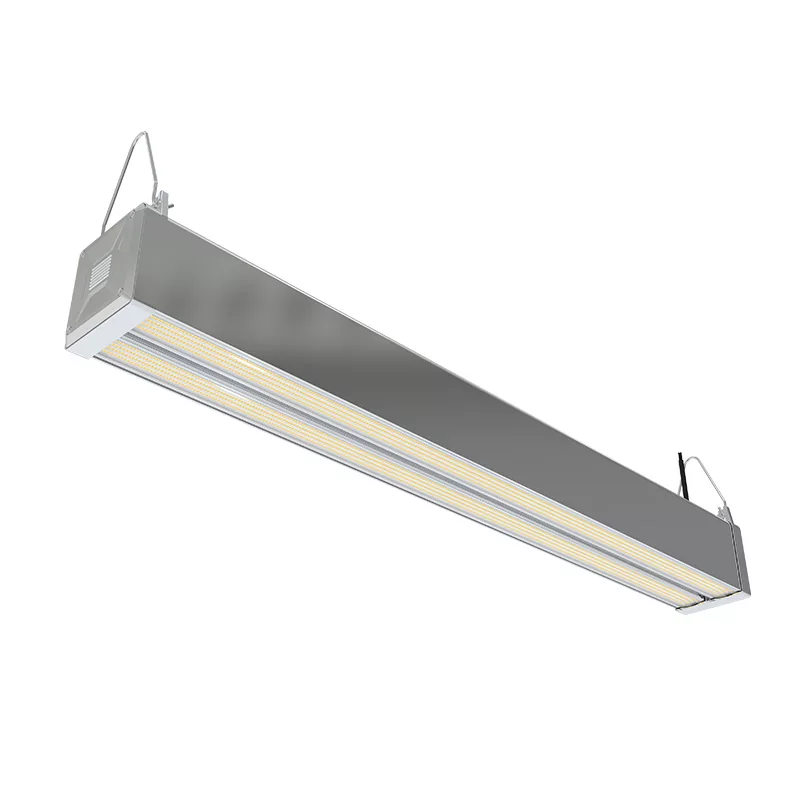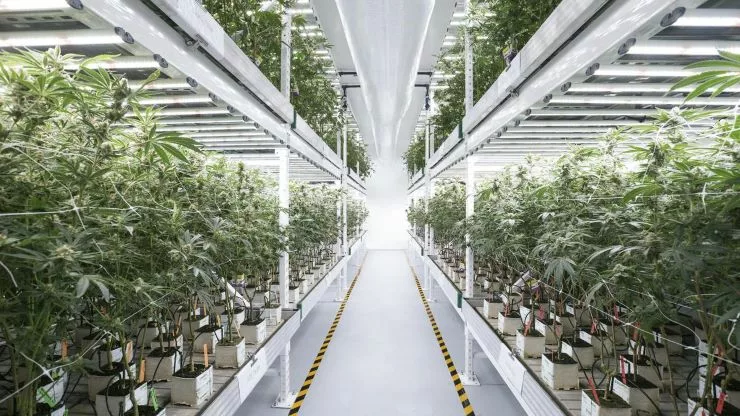When growing plants in a greenhouse, light is an indispensable element. In addition to natural light, artificial lighting also plays an important role, especially in seasons or areas with insufficient light. Choosing the right light color is crucial to plant growth and health. In a greenhouse, for optimal plant growth, you generally wouldn't want to use just one color of light.
Light used to grow plants in a greenhouse
Full-spectrum light: This mimics natural sunlight and is the ideal choice for most greenhouse settings. It provides a range of wavelengths that plants utilize for photosynthesis.The TUBU full-spectrum greenhouse LED grow light is a high-power, high-efficiency grow light suitable for a variety of greenhouse and indoor growing applications. TUBU full spectrum greenhouse LED grow lights are ideal for greenhouses and indoor growing. It can help you increase plant yield and quality, reduce operating costs, and contribute to environmental protection.
Equipped with external RJ14 cable for daisy-chaining for series control (up to 80 lamps in series)
Specific colors for targeted effects: While full-spectrum is best overall, some colors play a more prominent role:
Red (630-660 nm): Crucial for germination, stem growth, leaf expansion, and flowering. Too much red light alone can make plants leggy, so balance is key.
Blue (400-450 nm): Influences plant growth, promotes chlorophyll absorption, and can even make plants bushier.


What to consider when choosing grow lights?
Plant type: Different plants have varying light requirements. Research the specific needs of your crops for optimal results.
Growth stage: Seedlings may need more blue light for initial growth, while flowering plants benefit from a red-dominant spectrum.
What are the options for achieving the right light spectrum?
Full-spectrum LED grow lights: These are becoming increasingly popular due to their efficiency and ability to target specific wavelengths.
High-Intensity Discharge (HID) lamps: These provide good light output but can be less efficient than LEDs.
Remember: When using colored lights, aim for a balanced mix that caters to the specific needs of your plants and their growth stage.
Greenhouse Plant Lighting FAQs
How much light do Greenhouse Grow Plants need?
Plants' needs for light vary with species, growth stage, and environmental conditions. Insufficient light can lead to slow plant growth, yellowing of leaves, poor flowering and fruiting, and other problems. Excessive light will cause plant burns, leaf wilting and other problems. Generally speaking, most plants require at least 6 hours of light per day. Sun-loving plants require more light, while shade-loving plants require less light.
What color of light is most suitable for greenhouse plant growth?
Full-spectrum lighting is the best choice because it contains all the wavelength ranges of light needed for photosynthesis by plants.
How to choose suitable greenhouse plant lighting fixtures?
When choosing lighting fixtures, you need to consider the type of light, choosing full-spectrum lighting or specific colors based on the needs of your plants. Light intensity needs to be considered and appropriate light intensity chosen based on plant type and growth stage. It is necessary to consider the power of lamps and choose the appropriate lamp power according to the greenhouse area. Service life needs to be considered. Choosing lamps with a long service life can reduce maintenance costs.
What issues should be paid attention to when lighting greenhouse plants?
Avoid excessive light, which can cause plant burns. Care should be taken to control light intensity and time. Pay attention to the heat dissipation of lamps and lanterns. Lamps and lanterns will generate heat when working. Pay attention to the heat dissipation of lamps and lanterns to avoid excessive temperature in the greenhouse. Check lamps regularly to see if they are damaged, and replace damaged lamps in a timely manner.
What are the common misunderstandings about greenhouse plant lighting?
It is believed that only red light can promote plant growth. In fact, blue light is also crucial to plant growth. It is believed that the stronger the light, the better. Excessive light will cause plant burns, so attention should be paid to controlling the light intensity. It is believed that using cheap lighting fixtures can save costs. Cheap lighting fixtures often have poor quality, short service life, and high subsequent maintenance costs.
